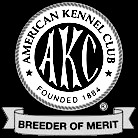|
|
|
Julie
Borst Reed |
|
u |
| u |
| Breeder
Ethics Questionnaire |
| u |
| Puppy Comes Home |
| u |
| u |
| Puppy Temperament Testing |
| u |
| Recommended Diet |
| u |
| FAQs
About Feeding Raw |
| u |
| REAL Dog Food |
| u |
| Fleas 101 |
| u |
| Standard
Poodle Health Concerns |
| u |
| Recommended Vaccination Schedule |
| u |
| Vaccination Decisions |
| u |
| Neutering |
| u |
| Photo Gallery |
| u |
| A Breeder's Life |
| u |
|
Interview
with Dog Breeders' Guild |
| u |
| Poodle Funnies |
| u |
| Tiara Home |
| u |
| u |

|
|
|
Fleas
101
If
you would really like the answer as to how to live with dogs and not
fleas, know that reading this is
just the first step. It is very hard and dedicated
work to achieve a flea-free existence in most areas of the world
when you live with a dog. If you
want the real answers and not just the shortcuts
of kibble dog foods fed and chemical toxins placed directly onto your
pet, then you won't be wasting your
time reading further. Please know that changing my dogs’ diet to
a fresh, raw source did make a huge difference in my dogs’ health.
Parasites are less likely to harbor on or in a healthy host.
Short synopsis to entice you: Just
wash your dog and clean the house and patrol
the yard. Don't walk the dog out of your environment during the height
of the flea season without washing him immediately when returning.
Wash the dog regularly and
condition well even within the same week. Top showdogs on occasion, are
washed many times within a week without damage to the (Poodle) coats.
Good shampoos are used
two, sometimes three times, on some showdogs each week.
Keep your environment clean. All laundry washed and put away. All floor surfaces cleaned daily if you need to. Hire help if you need to.
Do not spray
any toxins in your home or outdoor environment if you or someone in the
home is pregnant or trying to become pregnant, if you have small
children or a pregnant or
lactating bitch or puppies less than 5 months of age.
Please use what you can of my
experience to benefit your
trusting dog(s).
Fleas 101
Instead of using a neurotoxin, such
as "ADVANTAGE" directly on your pets, please
consider trying the following steps FIRST:
1) Clean, bathe your pet, his bed,
his environment at least every 7-10 days thoroughly.
The flea egg - to - flea cycle is 10 - 14 days. If your dog has
free reign of your home, that means
all the floor surfaces, all the bedding he
comes near, everything must be kept cleaned each week. Those 10-14
days is the shortest time it takes for the egg to flea cycle, but fleas
may stay cocooned for reportedly a year at a time waiting for the
vibration that awakens them that their first blood meal has arrived.
2) Keep your environment free of
stray animals (a very TALL fence helps). Keep the yard in lush lawn
without bare spots, weeds or tall grasses. Utilize
cement runs for the dogs if necessary to give the regular grass
lawn a break. If you have acreage,
keep the dog in a smaller, easier to monitor
area most of the time. Give the big runs on the acreage the day of
or
preferably just before their bath,
especially during the height of flea season.
3) Remove carpet and/or bark mulch
from your pet's environment. Cement in any
cracks in low decks, cement under taller decks, cement between bricks if
that is a patio, consider sealing
bricks and cement - keep all floors and stuffed furniture very
clean. You must clean the entire
floor surfaces of your home including the cracks where the wall
meets the floors. Items that may be
piled on the floor need to be removed and
the floor cleaned where possible. Do not permit clothes to be piled up
or anything in the way of your
cleaning under beds. The goal is all floor surfaces save
for under a tight, to-the-floor cabinet, MUST be accessible and able to
be cleaned (vacuumed, mopped
whatever is needed). These are all places that flea
larvae flourish. Make it difficult for them! These are also all the
places the Boric Acid Powder or the
Precor need to be placed if treating the environment (see suggestion # 6
below and consider BEFORE resorting
to the direct chemical to the pet solution).
4)
Walk your dog on pavement only. Avoid streets where lawns are not
perfect. Keep your dog's
head out of shrubs and off and away from
sandy-soiled
yards.
Cat "hangouts" or a place you suspect a skunk or
opossum to be are most
likely hotbeds for flea eggs/larvae and the dreaded cocoons. .. These
can hatch in
an instant once they feel your
pet's vibration of walking where the flea is cocooned
. . .
5) Learn details about the life
cycle of the flea. The larval stage is the most
vulnerable and your target. They eat skin cells, bits of food, and etc.
deep in your carpet or the cracks
of your flooring. They also flourish in wood
shavings, semi-bare spots in the yard's turf or around shrubs. Cracks
in cement or brick patios are also
safe havens for the flea larvae. They HAVE
to have the right temperature to flourish and the right amount of
moisture too. Study, know your
enemy.
6) If you still have carpet and
pets, have Boric Acid Powder placed in the carpet and stuffed furniture.
You can do this yourself or hire someone. There used to be a successful
company here called Flea Busters that would guarantee this more holistic
flea infestation preventative treatment of your home for a year.
Another,
more harsh chemical treatment, Precor can be used, IF you still have
carpet and are not yourself pregnant and if there are not small
children, young puppies or pregnant/lactating
bitches and you feel that you could
tolerate a bit of stronger chemical in your environment (especially
if you still have carpeting – ugh – why do you still have
carpeting?) spray your environment AFTER doing
all the above steps 1-5, spray: all floor surfaces, under beds, closet
floors, etc. and all
yard areas, garage, etc. with this chemical called Precor. This is best
done by a professional exterminator.
Do not vacuum afterwards for several days. Let the Precor work
those larvae! Same with if you put down the Boric Acid Powder, do not
vacuum for a few days. You may find that you need to do this environment
treatment only once or twice a year if you keep the dogs clean and out
of flea hotbeds. April and September are good months to start and then
only in September when you get a handle on this. Consider
limiting the dog to areas of the home without carpeting.
7) Accomplish ALL the ABOVE, and if
the project is still a failure and you can
not move to a safer location or renovate the existing premises, THEN
consider a small dose of Advantage
as the very last resort. Make certain to wear
gloves per the instructions on the label, as it is a neurotoxin and can cause convulsions in sensitive people or pets. Try the small
cat dose on your dogs first. It may work! My holistic vet suggests this
as the last resort in flea “control” if all the steps thus far do
not work for you, he recommends you consider the lowest dose available
for cats. This is not to be used on
young puppies or nursing/lactating bitches ever. If that small cat dose
does not work, then go
to the larger cat dose. .. . Better to dose every 4 weeks with
the cat dose than at all with the dog product. Better to actually work
on caring for your pet
better by keeping them protected from a flea infestation in
the first place by working to keep their environment clean and
non-hospitable to fleas. But alas,
not everyone has the same priorities. Do not reapply one of these
types of products to your pet EVER until you may see a flea.
8) If you still can't get the fleas
under control, something is wrong in your
execution and most likely your environment is being compromised by an
outside influence. Fleas do not
migrate except on host mammals. The flea eggs
fall to the ground off and around their hosts. Check your yard(s) that
your dog regularly uses with a
flash of light (and perhaps a hose handy) in the middle of
the night. Chase any varmint or stray cat intruders and do this anytime
you happen to get up in the middle
of the night and have the determination to protect your environment from
flea infestation. Do this with no routine or rhyme
or reason as to when the lights go on. Intruders soon find another
yard. Caution: do not be too
demanding if the intruder is wearing a black suit
with some white stripes. Skunks, opossum, rabbits and stray cats are
the biggest threat to penetrating
your environment and bringing in a new batch
of fleas. Fence well and patrol.
Now, I know all of this is hard
work, because I have done all of this for the love
of my dogs and to avoid the chemicals applied directly to my dogs. I
have never had to place toxins on my dogs either in a topical
application or a flea dip and at all times, I am living with a half
dozen dogs. Please note: most human shampoos kill fleas because
most of the products have a mild detergent. Actually most shampoo
products have more detergent in them
than my dogs' shampoos I use! Doc Ackerman's Orange Crème Shampoo is
one of the most delightful
shampoos. I use it regularly on my dogs and recommend it.
I
live in a flea hot
spot with perfect weather/moisture
for the larvae to flourish. I was able to
stop spraying the Precor once a year, when I started to feed my dogs
a raw diet. As a last resort, even
if you are against the raw diet, at least
get the grains out of your trusting carnivores and consider the new EVO
kibble diet perhaps. Raw feeding is
just a step away and is available everywhere meat is sold. ;)
Study and achieve the best in:
Diet
for Your Dog & Environment Cleanliness –
ALL
before placing that nasty set of
chemicals on your beloved pet.
Please. Please don't just take that shortcut.
For the Dogs,
copyright Julie Borst Reed, 2005
Tiara Standard Poodles
The Dapper Dog by Tiara
Permission Granted to Forward with
Credit
|
|
||
|
|
|
|
|
Site
designed by POL |
||







